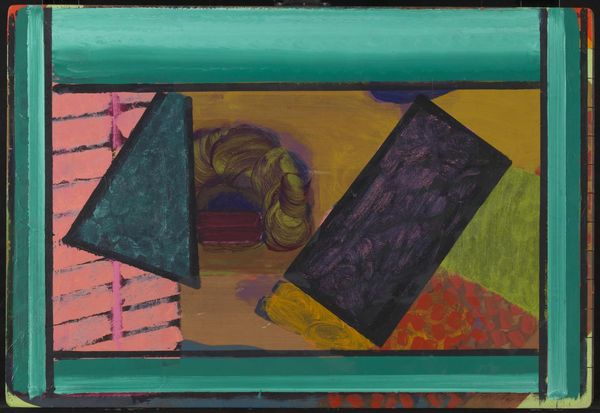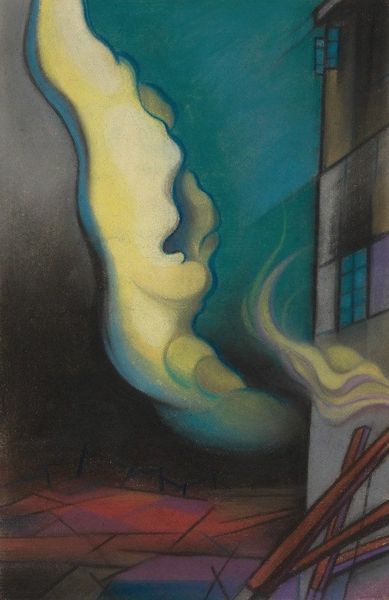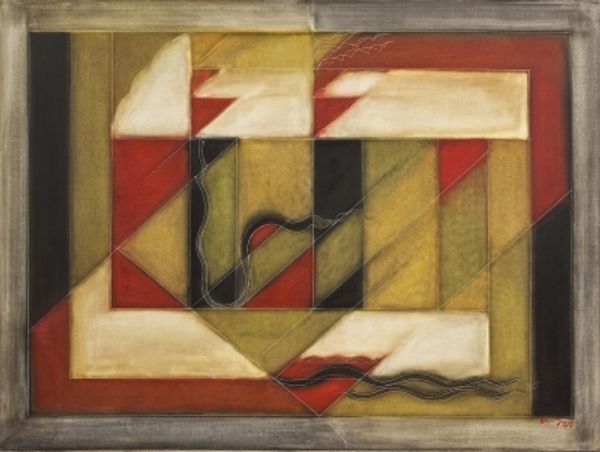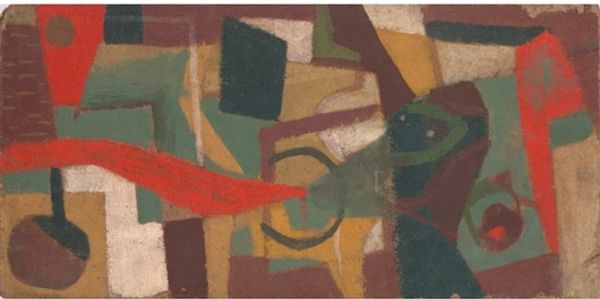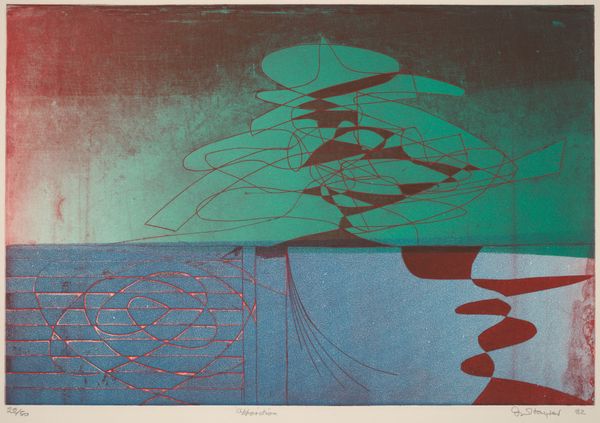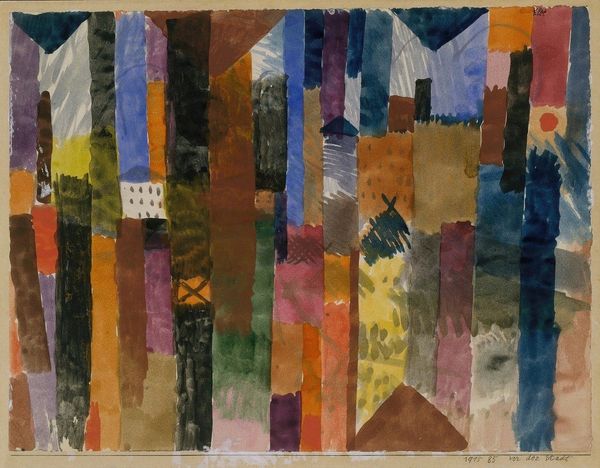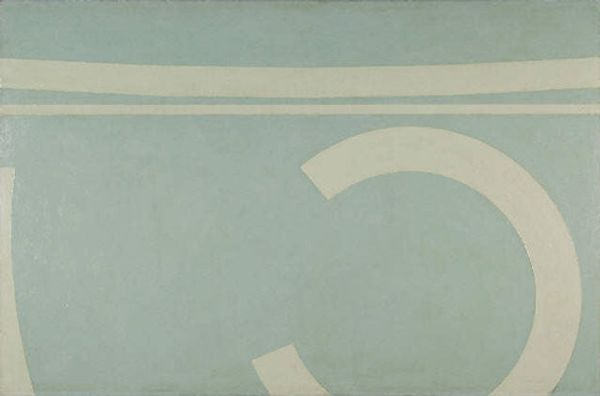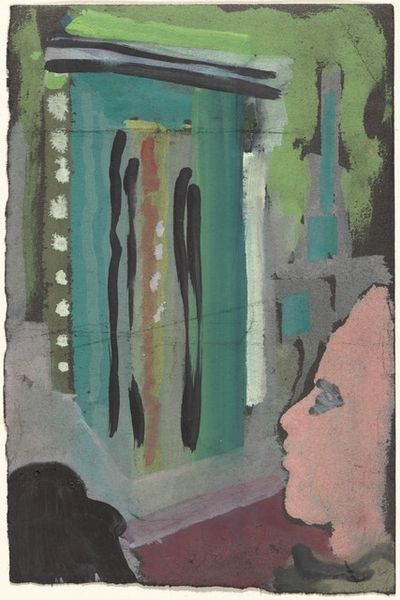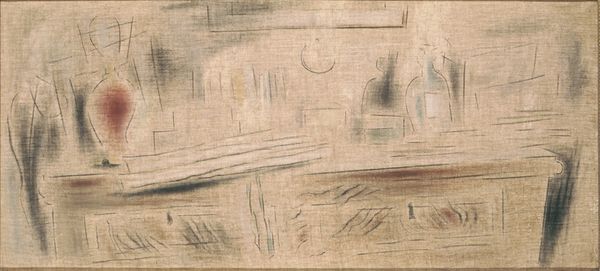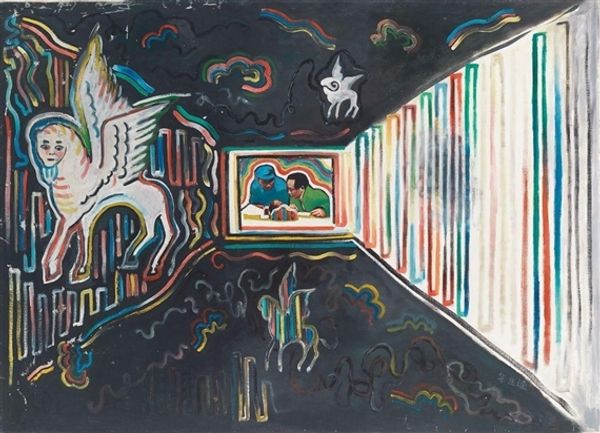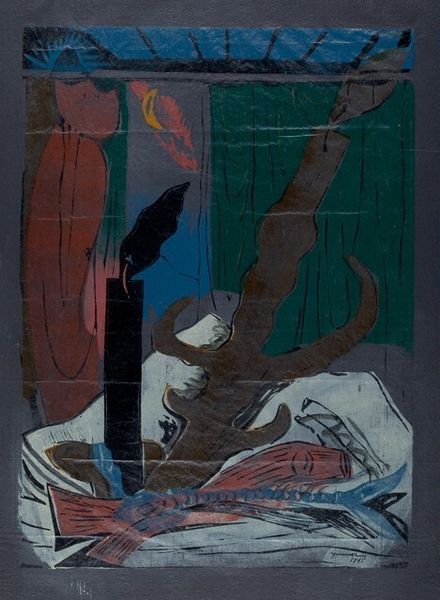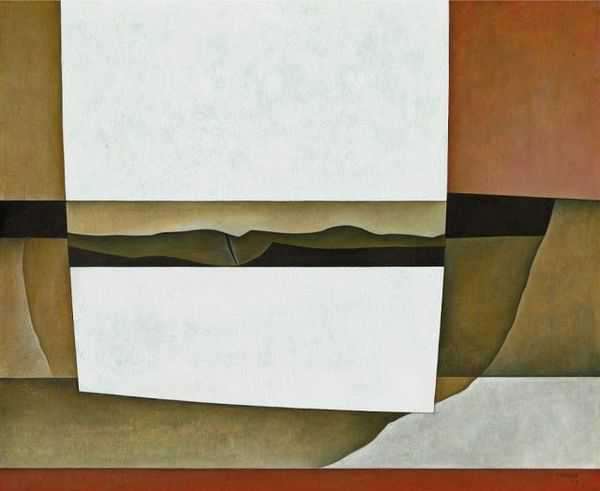
Copyright: Public Domain: Artvee
Curator: Here we have Karl Wiener’s “Bühnenbild,” dating from around 1940. It's a compelling expressionistic work done with colored pencil and pastel on paper. What’s your first reaction? Editor: An unsettling calm. There’s a strange serenity despite the vibrant, almost turbulent sky. The colors are moody, the scene quite lonely, like the last outpost at the end of the world. Curator: That solitude resonates, doesn’t it? Given the time period, with the rise of fascism, the image takes on a heightened significance. The building might symbolize a stronghold against a threatening sky of repression. Editor: You read so much history into symbols. Maybe a solitary tower is simply just that, a tower? Regardless, the lack of any evident activity evokes the sense of standing alone, which can have cultural and psychological weight in times of distress and displacement. Look at the sky, how fluid the colors bleed to signal that the air, though present, may signal of something toxic and unwelcoming. Curator: Consider Wiener's career designing stage sets. The dream-like quality could represent a state of mental projection. The tower on stage is always an artificial backdrop; we interpret its presence as if its purpose can extend its visuality. The image could suggest a form of self-preservation achieved through artistic illusion, and an observation of art's utility in its context. Editor: Fascinating. But could also imply a sense of futility? Building the façade, setting up the scenario when we cannot really engage, like being actors who never get the script? Curator: Perhaps the real drama unfolds in that suggestive sky—those winding pastel strokes create dynamic energy with some dark symbolism. Remember expressionism valued emotional experience over reality. Editor: That is definitely at play, suggesting not an explicit reality but the turbulent emotional landscape within the individuals and society during the time the artist was working. Curator: Indeed. By engaging the symbolism of displacement and isolation, we better grasp this artist's cultural context, which inevitably helps us relate its universal themes about individual perseverance. Editor: Thinking about it now, the image remains eerily haunting. The composition invites continuous introspection beyond the realm of mere aesthetics.
Comments
No comments
Be the first to comment and join the conversation on the ultimate creative platform.
